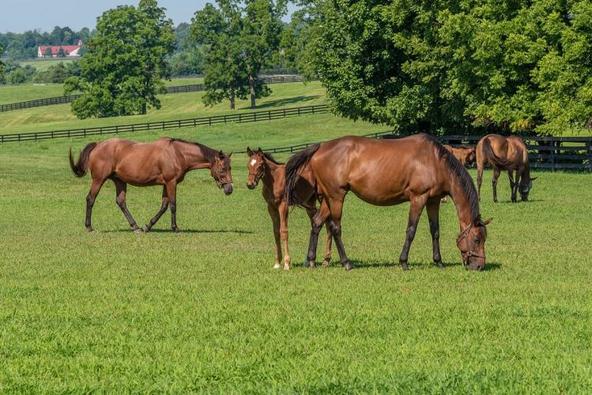by Dr. Lauren Scharff, U. S. Air Force Academy*
When we instructors think about student learning, we often default to immediate learning in our courses. However, when we take a moment to reflect on our big picture learning goals, we typically realize that we want much more than that. We want our students to engage in transfer of learning, and our hopes can be grand indeed…
- We want our students to show long-term retention of our material so that they can use it in later courses, sometimes even beyond those in our disciplines.
- We want our students to use what they’ve learned in our course as they go through life, helping them both in their profession and in their personal lives.
These grander learning goals often involve learning of ways of thinking that we endeavor to develop, such as critical thinking and information literacy. And, for those of us who believe in the broad value of metacognition, we want our students to develop metacognition skills. But, as some of us have argued elsewhere (Scharff, Draeger, Verpoorten, Devlin, Dvorak, Lodge & Smith 2017), metacognition might be key for the transfer of learning and not just a skill we want our students to learn and then use in our course.
Metacognition involves engaging in intentional awareness of a process and using that awareness to guide subsequent behavioral choices (self-regulation). In our 2017 paper, we argued that students don’t engage in transfer of learning because they aren’t aware of the similarities of context or process that would indicate that some sort of learning transfer would be useful or appropriate. What we didn’t explore in that paper is why that first step might be so difficult.
If we look to research in cognitive psychology, we can find a possible answer to that question – the representativeness heuristic. Heuristics are mental short-cuts based on assumptions built from prior experience. There are several different heuristics (e.g. representativeness heuristic, availability heuristic, anchoring heuristic). They allow us to more quickly and efficiently respond to the world around us. Most of the time they serve us well, but sometimes they don’t.
The representativeness heuristic occurs when we attend to obvious characteristics of some type of group (objects, people, contexts) and then use those characteristics to categorize new instances as part of that group. If obvious characteristics aren’t shared, then the new instances are categorized separately.
For example, if a child is out in the countryside for the first time, she might see a four-legged animal in the field. She might be familiar with dogs from her home. When she sees the four-legged creature in the field, so might immediately characterize the new creature as a dog based on that characteristic. Her parents will correct her, and say, “No. Those are cows. They say moo moo. They live in fields.” The young girl next sees a horse in a field. She might proudly say, “Look another cow!” Her patient parents will now have to add characteristics that will help her differentiate between cows and horses, and so on. At some level, however, the young girl must also learn meta-characteristics that make all these animals connected as mammals: warm-blooded, furred, live-born, etc. Some of these characteristics may be less obvious from a glance across a field.
Now – how might this natural, human way-of-thinking impact transfer of learning in academics?
- To start, what are the characteristics of academic situations that support the use of the representative heuristic in ways that decrease the likelihood of transfer of learning?
- In response, how might metacognition help us encourage transfer of learning?
There are many aspects of the academic environment that might answer the first question – anything that leads us to perceive differences rather than connections. For example, math is seen as a completely different domain than literature, chemistry, or political science. The content and the terminology used by each discipline are different. The classrooms are typically in different buildings and may look very different (chemistry labs versus lecture halls or small group active learning classrooms), none of which look or feel like the physical environments in “real life” beyond academics. Thus, it’s not surprising that students do not transfer learning across classes, much less beyond classes.
In response to the second question, I believe that metacognition can help increase the transfer of learning because both mental processes rely on awareness/attention as a first step. Representativeness categorization depends on the characteristics that are attended. Without conscious effort, the attended characteristics are likely to be those most superficially obvious, which in academics tend to highlight differences rather than connections.
But, with some guidance and encouragement, other less obvious characteristics can become more salient. If these additional characteristics cross course/disciplinary/academic boundaries, then opportunities for transfer will enter awareness. The use of this awareness to guide behavior, transfer of learning in this case, is the second step in metacognition.
Therefore, there are multiple opportunities for instructors to promote learning transfer, but we might have to become more metacognitive about the process in order to do so. First we must develop awareness of connections that will promote transfer, rather than remaining within the comfort zone of their disciplinary expertise. Then we must use that awareness and self-regulate our interactions with students to make those connections salient to students. We can further increase the likelihood of transfer behaviors by communicating their value.
We typically can’t do much about the different physical classroom environments that reinforce the distinctions between our courses and nonacademic environments. Thus, we need to look for and explicitly communicate other types of connections. We can share examples to bridge terminology differences and draw parallels across disciplinary processes.
For example, we can point out that creating hypotheses in the sciences is much like creating arguments in the humanities. These disciplinary terms sound like very different words, but both involve a similar process of thinking. Or we can point out that MLA and APA writing formats are different in the details, but both incorporate respect for citing others’ work and give guidance for content organization that makes sense for the different disciplines. These meta-characteristics unite the two formatting approaches (as well as others that students might later encounter) with a common set of higher-level goals. Without such framing, students are less likely to appreciate the need for formatting and may interpret the different styles as arbitrary busywork that doesn’t deserve much thought.
We can also explicitly share what we know about learning in general, which also crosses disciplinary boundaries. A human brain is involved regardless of whether it’s learning in the social sciences, the humanities, the STEM areas, or the non-academic professional world. In fact, Scharff et al (2017) found significant positive correlations between thinking about learning transfer and thinking about learning processes and the likelihood to use awareness of metacognition to guide practice.
Cognitive psychologists know that we can reduce errors that occur from relying on heuristics if we turn conscious attention to the processes involved and disengage from the automatic behaviors in which we tend to engage. Similarly, as part of a metacognitive endeavor, we can help our students become aware of connections rather than differences across learning domains, and encourage behaviors that promote transfer of learning.
Scharff, L., Draeger, J., Verpoorten , D., Devlin, M., Dvorakova, L., Lodge, J. & Smith, S. (2017). Exploring Metacognition as Support for Learning Transfer. Teaching and Learning Inquiry, Vol 5, No. 1. DOI: http://dx.doi.org/10.20343/5.1.6 A Summary of this work can also be found at https://www.improvewithmetacognition.com/researching-metacognition/
* Disclaimer: The views expressed in this document are those of the author and do not reflect the official policy or position of the U. S. Air Force, Department of Defense, or the U. S. Govt.

